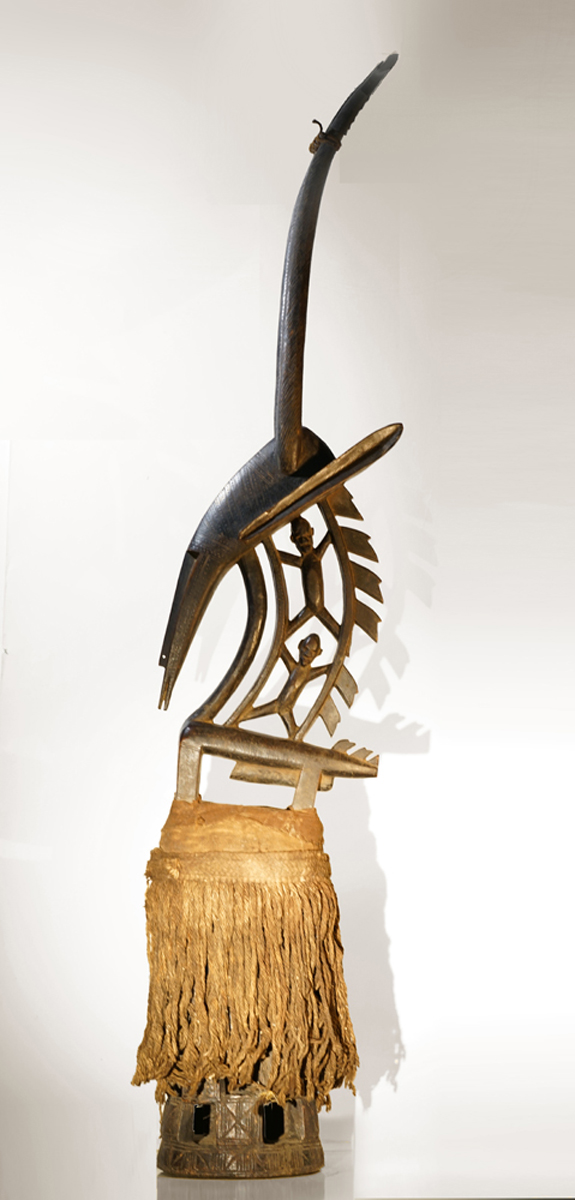|
A Ci Wara of the Central Segou region, posted on a rectangular base with the the original dancing-Basket, the legs in front higher than the legs at the back, the torso in a tapering manner, the openwork neck two parted and slightly curved with two human figures, a stylized mane at the back, the large conical head with two striated and curved horns, the elongated ears in arrow-like form, tapering at the beginning; fine aged patina of intensive ritual use, one part of the mane is missing. A Ciwara dance ceremony close to Segou, in the background the Niger-river, before 1940. "The tji wara society members use a headdress representing, in the form of an antelope, the mythical being who taught men how to farm. The word tji means “work” and wara means “animal,” thus “working animal.” There are antelopes with vertical or horizontal direction of the horns. In the past the purpose of the tji wara association was to encourage cooperation among all members of the community to ensure a successful crop. In recent time, however, the Bamana concept of tji wara has become associated with the notion of good farmer, and the tji wara masqueraders are regarded as a farming beast. The Bamana sponsor farming contests where the tji wara masqueraders perform. Always performing together in a male and female pair, the coupling of the antelope masqueraders speaks of fertility and agricultural abundance." Source: A History of Art in Africa, Publisher: Prentice Hall/Harry N. Abrams |
 photo: wolfgang-jaenicke.com, for more information, please write us an e-mail with the identification number of the photo identification no. DSC06561.jpg |